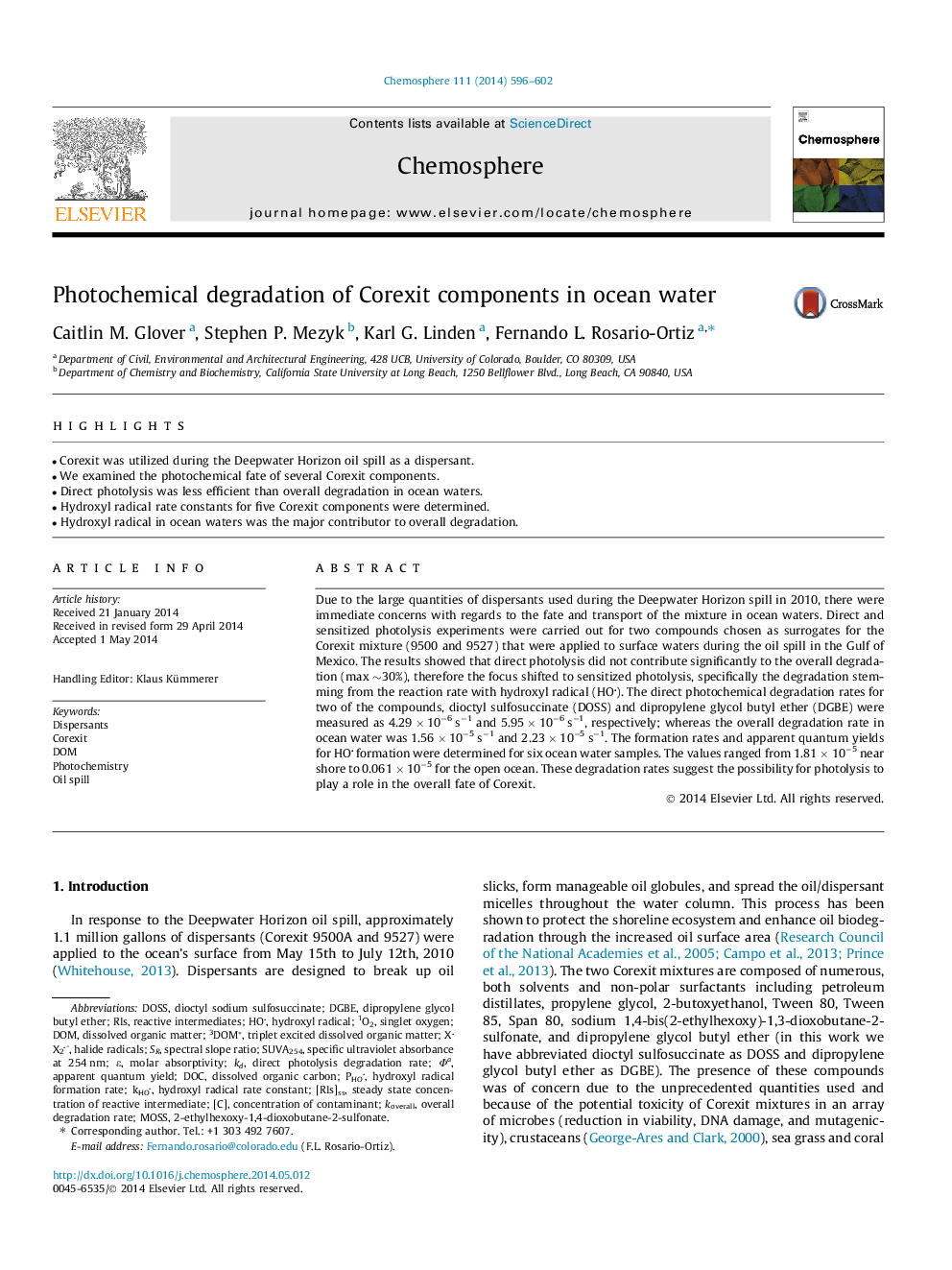| Article ID | Journal | Published Year | Pages | File Type |
|---|---|---|---|---|
| 6308732 | Chemosphere | 2014 | 7 Pages |
Abstract
Due to the large quantities of dispersants used during the Deepwater Horizon spill in 2010, there were immediate concerns with regards to the fate and transport of the mixture in ocean waters. Direct and sensitized photolysis experiments were carried out for two compounds chosen as surrogates for the Corexit mixture (9500 and 9527) that were applied to surface waters during the oil spill in the Gulf of Mexico. The results showed that direct photolysis did not contribute significantly to the overall degradation (max â¼30%), therefore the focus shifted to sensitized photolysis, specifically the degradation stemming from the reaction rate with hydroxyl radical (HO). The direct photochemical degradation rates for two of the compounds, dioctyl sulfosuccinate (DOSS) and dipropylene glycol butyl ether (DGBE) were measured as 4.29Â ÃÂ 10â6Â sâ1 and 5.95Â ÃÂ 10â6Â sâ1, respectively; whereas the overall degradation rate in ocean water was 1.56Â ÃÂ 10â5Â sâ1 and 2.23Â ÃÂ 10â5Â sâ1. The formation rates and apparent quantum yields for HO formation were determined for six ocean water samples. The values ranged from 1.81Â ÃÂ 10â5 near shore to 0.061Â ÃÂ 10â5 for the open ocean. These degradation rates suggest the possibility for photolysis to play a role in the overall fate of Corexit.
Keywords
Related Topics
Life Sciences
Environmental Science
Environmental Chemistry
Authors
Caitlin M. Glover, Stephen P. Mezyk, Karl G. Linden, Fernando L. Rosario-Ortiz,
